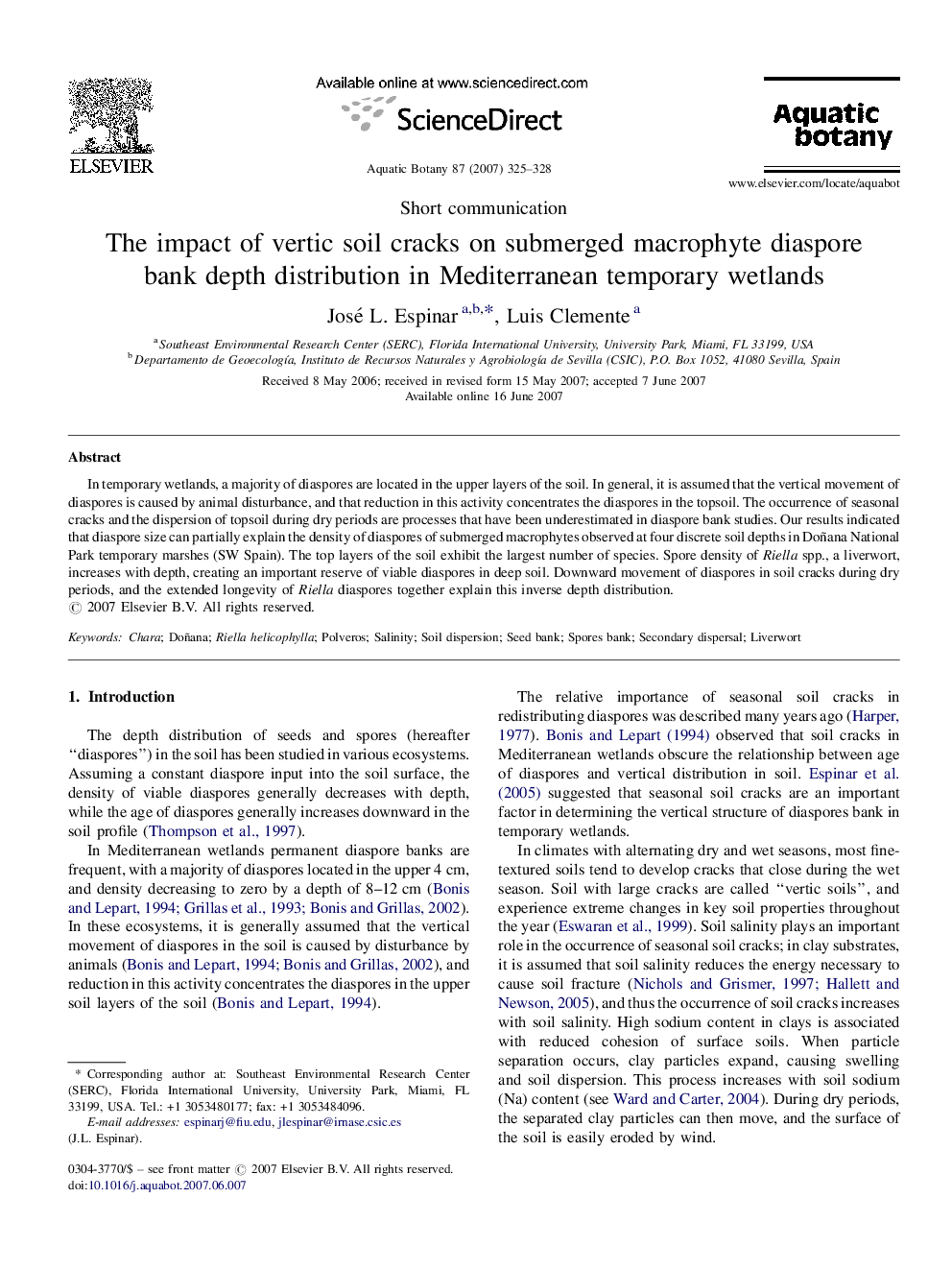| Article ID | Journal | Published Year | Pages | File Type |
|---|---|---|---|---|
| 4528468 | Aquatic Botany | 2007 | 4 Pages |
In temporary wetlands, a majority of diaspores are located in the upper layers of the soil. In general, it is assumed that the vertical movement of diaspores is caused by animal disturbance, and that reduction in this activity concentrates the diaspores in the topsoil. The occurrence of seasonal cracks and the dispersion of topsoil during dry periods are processes that have been underestimated in diaspore bank studies. Our results indicated that diaspore size can partially explain the density of diaspores of submerged macrophytes observed at four discrete soil depths in Doñana National Park temporary marshes (SW Spain). The top layers of the soil exhibit the largest number of species. Spore density of Riella spp., a liverwort, increases with depth, creating an important reserve of viable diaspores in deep soil. Downward movement of diaspores in soil cracks during dry periods, and the extended longevity of Riella diaspores together explain this inverse depth distribution.
